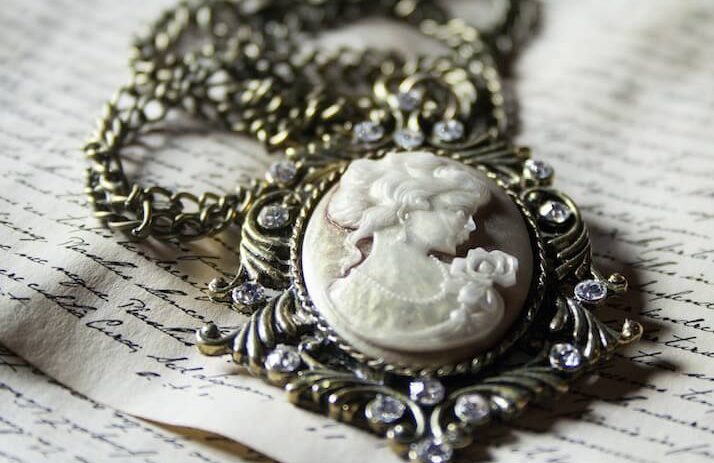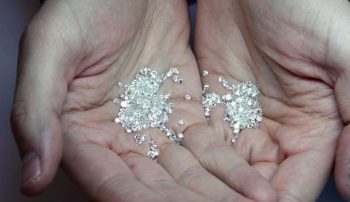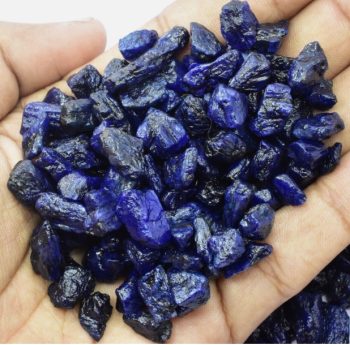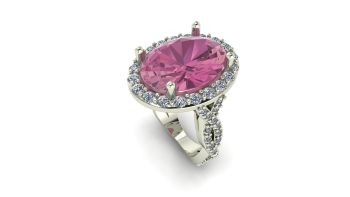The History Of Vintage Jewelry is loosely our history as well. It reflects the technology of the time and shows the styles popular at the time. When you inherit a piece of jewelry that has been passed down a few times, you are also inheriting the sentiment that the piece has been imbued with over the various owners. Especially with engagement rings. Vintage engagement rings have been very popular for the last five or so years for this reason. And it is not only for the story that vintage engagement rings tell, but also their craftsmanship.
Vintage jewelry was hand made by master metalsmiths who fabricated ornate and stunning designs in metal. And they did this using very few of the tools we have today. Vintage designs can be replicated today using CAD, but filigree made by hand is like far superior. It is like comparing a frozen pizza to one from your favorite pizzeria. In this post, we will discuss the history of vintage jewelry, specifically engagement rings, and how we got to where we are today.
Who Were The First To Wear Engagement Rings?
Engagement rings have a long history, and their origins can be traced back to ancient civilizations. The first recorded use of engagement rings dates back to ancient Egypt, where they were worn as a symbol of love and commitment. These early engagement rings were typically made of braided reeds or other natural materials. In ancient Rome, engagement rings were often made of iron, symbolizing the strength and durability of the marriage bond. It wasn’t until the 9th century that engagement rings began to be made of precious metals, such as gold and silver. The tradition of wearing engagement rings spread throughout Europe during the Middle Ages, and by the 19th century, diamond engagement rings became popular, thanks in part to a successful marketing campaign by the diamond company De Beers. Today, engagement rings are worn by people of all cultures and backgrounds as a symbol of love and commitment.
What Is Vintage Jewelry?
Vintage jewelry refers to jewelry items that were created during a previous era, typically between 60 and 150 years ago. These pieces often showcase unique designs and craftsmanship that may not be commonly found in contemporary jewelry. Vintage jewelry can include a wide range of styles, materials, and gemstones, reflecting the fashion trends and cultural influences of the time period in which they were made. Collectors and enthusiasts appreciate vintage jewelry for its historical significance, artistic value, and the sense of nostalgia it evokes. Whether you’re looking to add a touch of vintage charm to your personal style or seeking a special gift with a story to tell, exploring the world of vintage jewelry can be a rewarding experience.
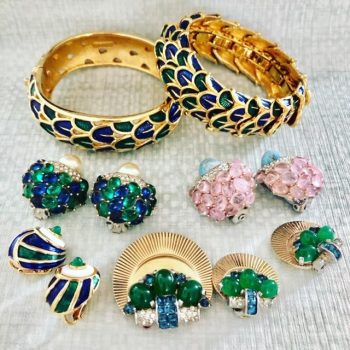
What Is The History Of Vintage Jewelry
Vintage jewelry has a rich and fascinating history. It dates back to ancient civilizations, where people adorned themselves with jewelry made from shells, stones, and bones. As time progressed, different cultures developed unique styles and techniques for creating jewelry. In the Victorian era, jewelry became more elaborate and intricate, often featuring gemstones and precious metals. The Art Nouveau movement in the late 19th and early 20th centuries brought a shift towards nature-inspired designs. The Art Deco period of the 1920s and 1930s embraced geometric shapes and bold colors. Vintage jewelry continues to be highly sought after today, as it represents a blend of history, craftsmanship, and timeless beauty. Whether it’s a delicate Edwardian necklace or a glamorous Art Deco ring, vintage jewelry allows us to connect with the past and express our individual style.
What Traits Do Vintage Engagement Rings Have?
Vintage engagement rings possess a unique charm and character that sets them apart from modern designs. These rings typically feature intricate craftsmanship and exquisite details, showcasing the artistry of a bygone era. One of the defining traits of vintage engagement rings is the use of different gemstone cuts, such as the popular Old European cut or the elegant Asscher cut. Additionally, vintage rings often incorporate intricate filigree work, milgrain detailing, and ornate engraving, adding a touch of timeless elegance. The use of precious metals like platinum or yellow gold further enhances the vintage appeal of these rings. Overall, vintage engagement rings exude a sense of history and romance, making them a perfect choice for those seeking a one-of-a-kind piece with a touch of nostalgia.
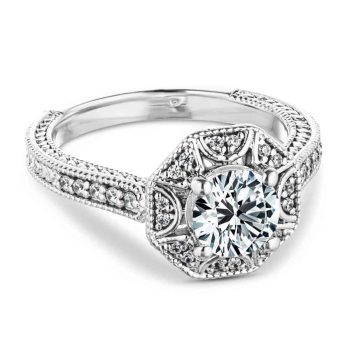
What Types Of Stones Were Used In Vintage Engagement Rings?
Vintage engagement rings often feature a variety of exquisite stones. Some popular choices include diamonds, sapphires, emeralds, rubies, and opals. These stones were carefully selected for their beauty and durability, ensuring that the rings would stand the test of time. In the early 1900s, gemstone cutting technology underwent significant advancements. Traditional methods such as hand cutting and polishing were still prevalent, but new techniques emerged. One notable development was the introduction of mechanical cutting machines, which allowed for more precise and efficient gemstone cutting. These machines utilized rotating wheels and abrasive materials to shape and polish gemstones. Additionally, the use of diamond-tipped tools became more widespread, enabling gem cutters to work with harder gemstone materials. This led to far more shapes of gemstones being cut. Until then, rounds and ovals were generally your two choices.
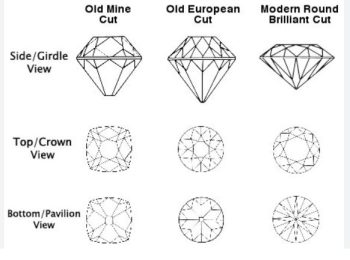
Vintage Jewelry is Durable
Vintage jewelry is known for its durability due to several key factors. Firstly, the materials used in vintage jewelry, such as gold, silver, and gemstones, are of high quality and have stood the test of time. These materials are often more durable than their modern counterparts, as they were crafted with meticulous attention to detail and craftsmanship. Additionally, vintage jewelry is often handcrafted, which further contributes to its durability. The skilled artisans of the past took great pride in their work, ensuring that each piece was made to last. Furthermore, vintage jewelry has often been well-maintained and cared for over the years, which has helped to preserve its durability. Many owners have taken the time to clean, polish, and store their vintage pieces properly, preventing damage and maintaining their original beauty.
Vintage Jewelry Is Affordable
Vintage engagement rings are affordable for several reasons. Firstly, they are often made with less expensive materials compared to modern rings. This can include using smaller diamonds or alternative gemstones, as well as using less expensive metals such as silver or gold-plated options. Additionally, vintage rings are typically pre-owned, which means they do not come with the same markups as new rings. This can result in significant cost savings for buyers. Furthermore, the vintage market offers a wide range of options, allowing buyers to find unique and affordable pieces that suit their personal style and budget.
Famous Vintage Engagement Rings
Throughout history, there have been many famous vintage engagement rings that have captured the hearts and imaginations of people around the world. These rings are not only beautiful pieces of jewelry, but also hold significant historical and cultural value. One such ring is the iconic engagement ring worn by Princess Diana, which now adorns the finger of the Duchess of Cambridge, Kate Middleton. This stunning sapphire and diamond ring is not only a symbol of love and commitment, but also a reminder of the enduring legacy of Princess Diana.
Another famous vintage engagement ring is the one given to Audrey Hepburn by her first husband, Mel Ferrer. This elegant ring features a three-carat diamond surrounded by smaller diamonds, and perfectly reflects Hepburn’s timeless and sophisticated style. Additionally, the engagement ring given to Elizabeth Taylor by Richard Burton is another notable vintage piece. This exquisite ring features a 33.19-carat Asscher-cut diamond, known as the “Elizabeth Taylor Diamond,” and is a testament to the couple’s extravagant and passionate love affair. These famous vintage engagement rings serve as a reminder of the enduring power of love and the beauty of timeless jewelry.
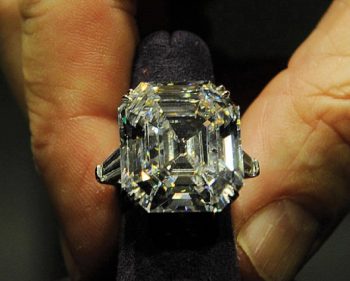
Types of Vintage Jewelry
Art Deco Jewelry
Art deco jewelry emerged in the 1920s and 1930s, during the Art Deco movement. It was influenced by various artistic styles, including Cubism, Futurism, and Egyptian art. The jewelry featured geometric shapes, bold colors, and intricate designs. It was often made using precious metals, such as platinum and gold, and adorned with gemstones, such as diamonds, emeralds, and sapphires. Art deco jewelry was highly sought after for its glamour and elegance. It reflected the modern and progressive spirit of the time and became a symbol of wealth and sophistication. Today, art deco jewelry is still admired for its timeless beauty and continues to inspire contemporary jewelry designers.
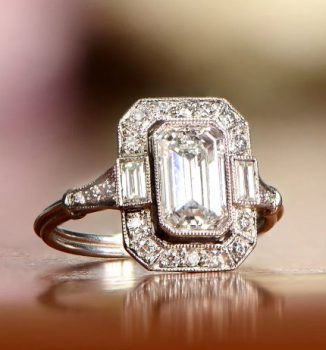
Edwardian Jewelry
Edwardian Jewelry refers to the jewelry styles that were popular during the reign of King Edward VII of England, from 1901 to 1910. This period was characterized by a shift in jewelry design, influenced by the Art Nouveau and Belle Époque movements. Edwardian Jewelry is known for its delicate and intricate designs, featuring platinum settings, diamonds, pearls, and colored gemstones. The use of platinum allowed for the creation of intricate filigree work and delicate lace-like designs.
Edwardian Jewelry also incorporated motifs such as bows, garlands, and ribbons, reflecting the romantic and feminine aesthetic of the time. The jewelry was often adorned with diamonds, which were highly valued during this period. Pearls were also popular, and were often used in combination with diamonds to create elegant and timeless pieces. Edwardian Jewelry was highly influenced by the fashions and trends of the time, and reflected the opulence and luxury of the Edwardian era. Today, Edwardian Jewelry is highly sought after by collectors and enthusiasts for its exquisite craftsmanship and timeless beauty.
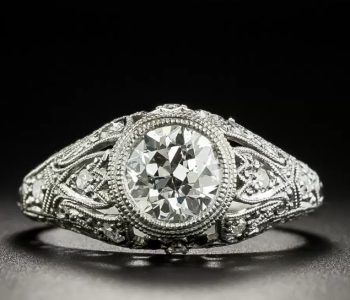
Victorian Jewelry
Victorian jewelry refers to the jewelry styles that were popular during the Victorian era, which spanned from 1837 to 1901. This period was named after Queen Victoria, who reigned over the United Kingdom during this time. Victorian jewelry is known for its intricate designs, attention to detail, and use of a wide range of materials. Common materials used in Victorian jewelry include gold, silver, diamonds, pearls, and gemstones such as amethyst, garnet, and turquoise. The styles of Victorian jewelry varied throughout the era, reflecting the changing tastes and trends of the time.
Early Victorian jewelry, also known as the Romantic period, featured sentimental motifs such as hearts, flowers, and bows. Mid-Victorian jewelry, also known as the Grand period, saw the rise of mourning jewelry, which incorporated black enamel and hair from deceased loved ones. Late Victorian jewelry, also known as the Aesthetic period, embraced naturalistic designs inspired by nature, such as leaves, birds, and insects. Victorian jewelry is highly sought after by collectors and enthusiasts today, due to its historical significance and exquisite craftsmanship. Whether you’re interested in purchasing Victorian jewelry or simply learning more about this fascinating era, exploring the world of Victorian jewelry can be a rewarding experience.
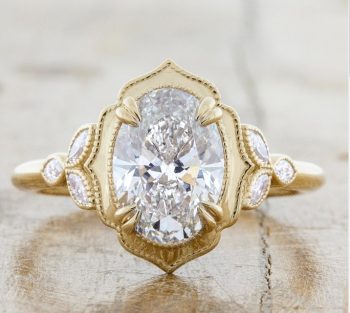
Why Vintage Jewelry Is Not The Same As Antique Jewelry
Vintage jewelry and antique jewelry may seem similar, but they are not the same. Vintage jewelry refers to pieces that are at least 20 years old, while antique jewelry is typically over 100 years old. The distinction lies in the age of the pieces. Vintage jewelry often reflects the style and trends of a particular era, making it popular among fashion enthusiasts. Antique jewelry, on the other hand, holds historical significance and is often considered valuable due to its age and rarity. So, while both vintage and antique jewelry have their own appeal, it’s important to understand the difference between the two.
